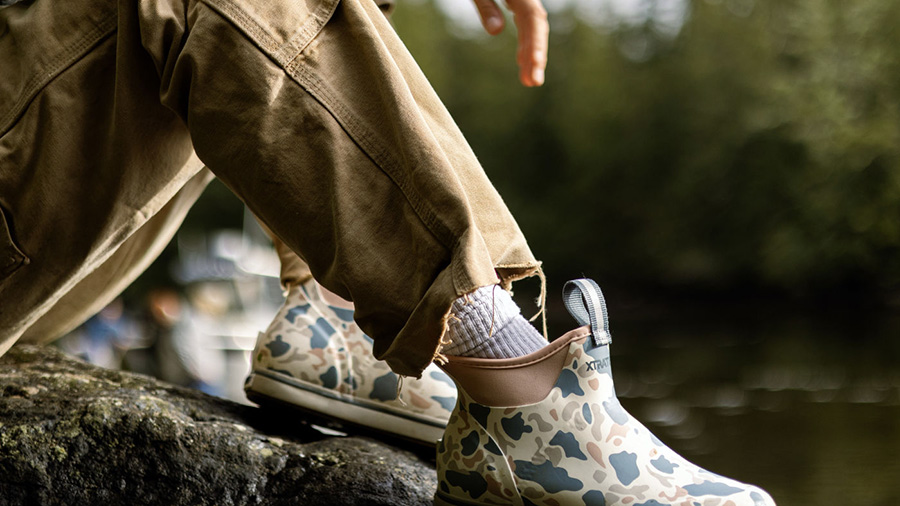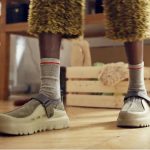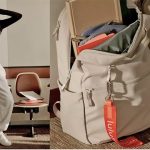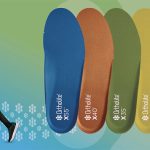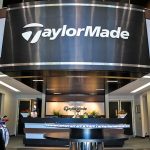Rocky Brands CEO Jason Brooks spoke about first quarter results, tariff implications and price increases on a conference call with analysts, sharing that the parent of the Rocky, Georgia Boot, Durango, Lehigh, The Original Muck Boot company, Xtratuf, and Ranger brands experienced healthy demand within its brand portfolio and throughout its distribution channels.
Brooks said demand was especially strong for the rubber boot business, which includes both Xtratuf and Muck.
“The Xtratuf brand has been gaining momentum for several quarters, with sell-through online and at Wholesale accelerating in Q1 as we increased our inventory position in key styles,” the CEO noted.
“Since our last earnings call in February, the world we are operating in has become much more dynamic following higher tariffs imposed by The U.S. on most all trade partners, particularly China,” Brooks offered. “While the situation is very fluid and the outcome of ongoing negotiations is uncertain, we’ve moved quickly to mitigate the impact of the higher tariffs and believe we have a sound plan in place to protect our gross profit dollars under multiple scenarios.”
Brooks said that based on current tariff rates, Rocky Brands expects to implement price increases on the majority of its footwear styles in early June but will maintain flexibility to adjust prices accordingly based on any future changes as they are announced.
“We are also accelerating our efforts to reduce the amount of products we source from China. This includes procuring more footwear from partners in Vietnam, Cambodia, India and as well shifting production to our manufacturing facilities in The Dominican Republic and Puerto Rico,” the CEO shared.
Asked about production capacity shifts to these other countries, he assured the call participants that in-house manufacturing facilities are adequately prepared to handle the transition.
“While we anticipate that higher prices will put some pressure on the consumer demand, we believe the strength of our brands and the functionality of our products, along with our diversified sourcing structure, has us well positioned to navigate current situation and allow us to achieve our financial targets for the year,” Brooks said.
Asked about pricing strategies and timing of price increases, Brooks noted that price adjustments would preserve gross profit dollars while maintaining retail competitiveness, with final plans to be announced soon.
First Quarter Summary
First quarter net sales increased 1.1 percent to $114.1 million compared with $112.9 million in the first quarter of 2024.
Wholesale sales for the first quarter decreased 6.3 percent to $74.8 million compared to $79.8 million in the first quarter of 2024, primarily due to planned reductions in commercial military sales.
Contract manufacturing sales were $2.6 million, flat year-over-year.
Retail sales for the first quarter increased 20.4 percent to $36.6 million compared to $30.4 million in the first quarter of 2024.
Brand Summary
Xtratuf
Brooks said the Xtratuf brand continues its recent momentum and delivered another exceptional quarter with double-digit growth in Q1.
“Importantly, we have seen the brand continue to expand its reach into new regions and niches, growing in popularity across the inland U.S. and the new demographics outside of its core male consumer. In fact, at our spring 2025 deliveries, our most popular new styles are the women’s duck camo and ivory colored ankle deck boots,” the CEO shared.
“The brand performed strongly across key accounts, including sporting goods retailers, fishing shops and even western stores, with independent customers keeping pace as well,” he continued. “Many retailers saw excellent sell-through on both proven classics and new colors, demonstrating strong retail demand for the brand. We also successfully launched Xtratuf at a key sporting retailer in Q1, leading to added styles, replenishment orders and door expansions. Bookings are up approximately 80 percent versus last year.”
Muck Boots
Muck also reportedly started 2025 with better-than-expected growth. Better weather in much of The United States compared to the warm, dry patterns of the previous two years led to a significant uptick in the brand’s performance, according to Brooks.
“Our women’s business was a surprise standout, delivering a double-digit increase in the period,” he noted. “Additionally, improved inventory positions in key styles contributed to the successful quarter. From a marketing standpoint, our enhanced digital advertising continued to deliver strong results with a focused approach on the work and utility category during cold weather periods.”
Durango
Coming off an exceptional 2024, the Durango brand reportedly saw sell-in to Wholesale moderate in the first quarter due in part to difficult comparisons and timing shifts, as some first quarter orders were delivered early in late 2024.
“That said, we did see some underlying strength, particularly online and with our At Once business, which was positive in the quarter and we anticipate large volume orders in the back half of 2025 as retailers optimize their inventory levels,” Brooks added. “Importantly, our inventory position in top styles remains strong heading into the second quarter.
Georgia Boot
While January and February were said to be positive for Georgia Boot, March was notably softer as the field customer base slowed orders due to the economic uncertainty.
“Additionally, we saw some sizable orders come later this year, falling into Q2, while we also did not anniversary some large orders from 2024, many of which were driven by retailers resetting assortments that are now established,” the CEO noted.
“Despite the sluggish orders from our retail partners, recent introductions like the Romeo Superlight continue to perform well to the point that we are chasing inventory in the first quarter,” Brooks detailed. “Other new offerings that are focused on hitting key price points while maintaining comfort and quality have resonated with retailers and consumers alike, continuing to sell through and recently being added at several major retailers for later this year.”
Rocky Brand Group
The brand’s Work and Outdoor categories both reportedly showed increases compared to last year, with Rocky Work delivering the strongest performance. Brooks said Work styles saw solid expansion with key national safety shoe distributor partners and regional and local shoe distributors in the period that drove its success.
Rocky Outdoor returned to growth after a string of consecutive difficult quarters. The brand reportedly delivered a single-digit increase over last year through solid distribution with e-commerce partners, national chains and independent retailers across the country.
“A renewed snake boot program with a prominent national retailer and strong sales on our e-commerce site contribute to the increase,” Brooks added.
“Additionally, a longer winter season in most of the country provided extended opportunities with insulated boots selling, which has not been seen the case in recent seasons,” the CEO expanded. “New additions to our growing rugged casual business contributed to the solid quarter as well.”
Rocky Western sales were reportedly down in Q1, primarily due to a tough comparison from elevated off-price sales of discontinued product in Q1 last year that did not anniversary in 2025.
“Particularly offset this headwind was the introduction of a Western Boot to a key farm and ranch multi-store chain in the Northwest, along with solid sales with our e-commerce drop ship partners,” the CEO shared.
Segment Summary
The Commercial Military and Duty segment was down in Q1, said to be “largely in line” with projections. The expected decrease was reportedly due to the benefit of a year ago from a sizable commercial military blanket purchase agreement that elevated early 2024 sales.
“On top of this, the order implemented by the Department of Government Efficiency in February, freezing all government purchasing cards, was also a headwind in the first quarter,” Brooks noted.
In the Retail segment, the B2B Lehigh business reportedly had a terrific quarter, with sales increasing in the high teens, marking the third consecutive quarter of double-digit gains.
“As the realignment of our sales team reaches its one-year anniversary and new processes are firmly in place, the business is firing on all cylinders. Customer spending continues to be strong with improved subsidy utilization and increase in average subsidy dollars year-over-year.
Brooks said new customer acquisition remains robust with the addition of 190 new accounts this quarter, with no indication of a market slowdown to date.
“Our direct-to-consumer business, which consists of our own branded websites and leading third-party marketplaces, grew at an even faster pace than Lehigh, led by marketplace volumes as clear through a good deal discontinued inventory in the quarter,” he concluded.
Income Statement Summary
Gross margin was 41.2 percent of net sales in the first quarter, a 210 basis-point improvement compared to 39.1 percent of net sales for the Q1 period last year. The increase in gross margin was said to be attributable to increased Wholesale margins as well as increased Retail sales, which carry a higher gross margin than the Wholesale and Contract Manufacturing segments.
“With better full price selling, overall and retail increasing meaningfully as a percentage of the total sales, we achieved record first quarter gross margins and our second highest gross margin ever, only behind the fourth quarter of last year,” Brooks added.
Operating expenses were $38.3 million, or 33.6 percent of net sales, for the first quarter, compared to $36.2 million, or 32.0 percent of net sales, for the 2024 Q1 period. Excluding $0.7 million of acquisition-related amortization in the first quarter of 2025 and 2024, adjusted operating expenses were $37.6 million in the current-year period and $35.5 million in the year-ago period. Adjusted operating expense margin was 33.0 percent of net sales in Q1, compared with 31.4 percent in the year-ago period. The increase in operating expenses was reportedly driven primarily by higher selling and logistics costs associated with the increase in our direct-to-consumer business compared with the year ago period.
Income from operations for the first quarter was $8.7 million, or 7.6 percent of net sales, compared to $8.0 million, or 7.1 percent of net sales, for the 2024 Q1 period. Adjusted income from operations for the first quarter was $9.4 million, or 8.2 percent of net sales, compared to Adjusted income from operations of $8.7 million, or 7.7 percent of net sales, in Q1 last year.
Interest expense for the first quarter of 2025 was $2.4 million, compared with $4.5 million for the prior-year comparative period. The decrease was reportedly driven by lower interest rates as a result of the debt refinancing completed in April 2024 as well as lower debt levels.
The company reported first quarter net income of $4.9 million, or 66 cents per diluted share, compared to $2.6 million, or 34 cents per diluted share, in the 2024 first quarter. Adjusted net income for the 2025 first quarter was $5.5 million, or 73 cents per diluted share, compared to $3.1 million, or 41 cents per diluted share, in the year-ago Q1 period.
Balance Sheet Summary
Cash and cash equivalents were $2.6 million at quarter-end, compared to $3.1 million at 2024 Q1 quarter-end.
Total debt, net of unamortized debt issuance costs of $2.1 million, was $128.6 million at quarter-end, consisting of a $33.0 million senior term loan and $97.7 million of borrowings under the company’s senior secured asset-backed credit facility. As of March 31, 2025, total debt, net of unamortized debt issuance costs was down 17.5 percent from March 31, 2024 and was flat compared to December 31, 2024.
Inventories at quarter-end were $175.5 million, up 6.3 percent compared to $165.1 million at 2024 Q1 quarter-end and up 5.3 percent compared to $166.7 million as of December 31, 2024.
Outlook
Management reiterated its full-year 2025 guidance, expecting revenue to grow in the low-single digit range over 2024 levels.
“Looking ahead, we acknowledge that there is a higher degree of uncertainty over the remainder of the year,” Brooks offered. “Our confidence in maintaining our outlook stems from our better-than-expected first quarter performance, the positive effect recent sales have had on our future bookings and our ability to mitigate the impact of tariffs through recent inventory investments, pricing actions and our diversified sourcing structure.”
Gross margins are forecasted to decline modestly, with additional pressure from recent tariff increases.
EPS for 2025 is projected to be slightly below 2024’s adjusted EPS of $2.54, with pricing actions and sourcing diversification expected to help offset tariff impacts.
Asked about the ability to maintain profit guidance amidst tariffs and the progress in reducing dependency on China. CFO Tom Robertson explained that the company has sufficient inventory to buffer tariff impacts and aims to reduce sourcing from China to below 20 percent by year-end.
Image courtesy Xtratuf

